Art Guides
Art Shines in Washington, D.C., This Summer. Here Are Four Ways to Make the Most of the Cultural Highlights
Make a day of it with these suggested art excursions in the nation's capital, with pauses for refreshment along the way.
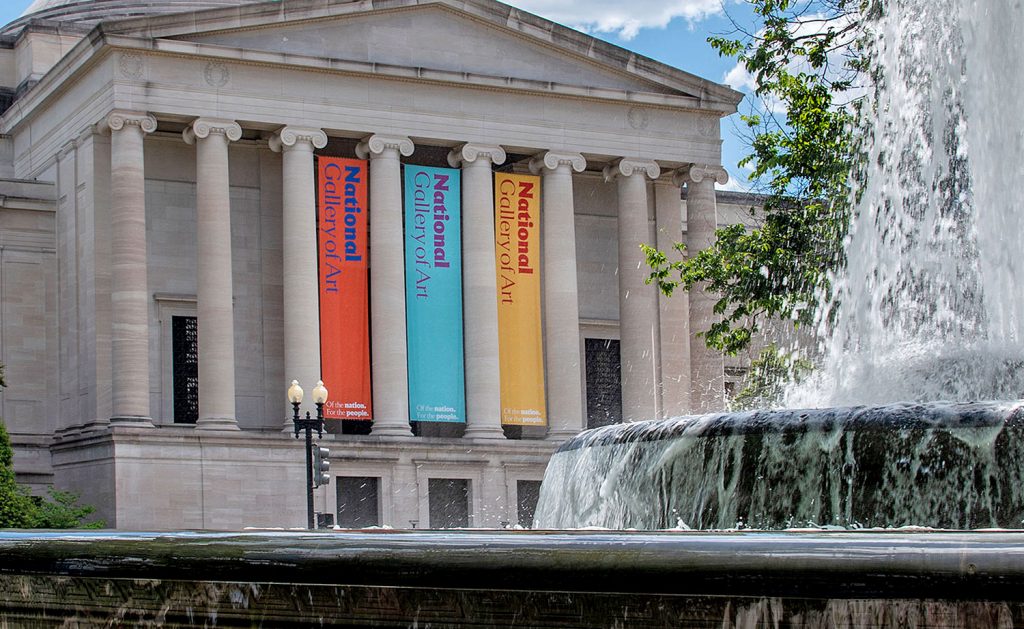
Make a day of it with these suggested art excursions in the nation's capital, with pauses for refreshment along the way.

Caroline Goldstein

While Washington, D.C., is the seat of the United States federal government, the city also harbors a robust cultural scene. From national landmarks like the Jefferson Memorial and Maya Lin’s Vietnam Veterans Memorial to contemporary art venues like the Hirshhorn Museum and the new Rubell Museum, plus the largest concentration of Smithsonian institutions, there is no shortage of art and culture in the nation’s capital.
We’ve curated a list of must-see special exhibitions and permanent installations perfect for a summer jaunt to the district, complete with restaurant recommendations to round out your experience.
There is perhaps no better a spot for art viewing in D.C. than the National Gallery of Art, particularly its sculpture garden located right on the National Mall. Endlessly magical, the garden is oriented around a fountain that in the winter transforms into an ice skating rink, and in the summer provides a welcome respite from the heat.
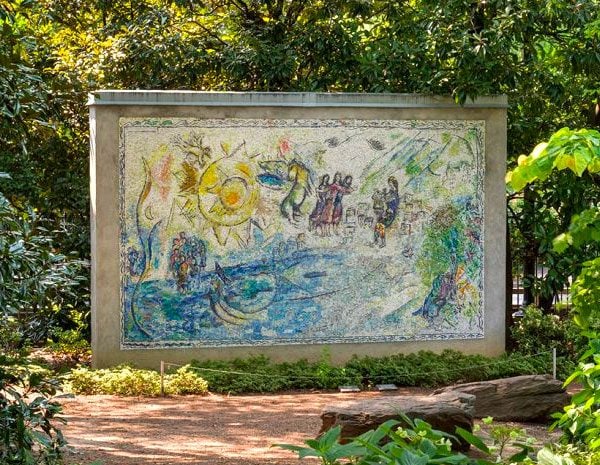
Marc Chagall, Orphée (1969). The John U. and Evelyn S. Nef Collection. Courtesy of the National Gallery of Art.
Monumental modern and contemporary sculptures are installed across all six acres of the garden, serving as an art-filled oasis amid the concrete jungle. Highlights include Marc Chagall’s Orphée (1969), a tile mosaic loosely inspired by Greek mythology and originally commissioned by art patrons John and Evelyn Nef for their own garden. Crafted in Murano glass and stones from Carra, Italy, the work was gifted to the museum in 2009 and remains a jewel of its collection.

Alexander Calder, Cheval Rouge (Red Horse) (1974). Courtesy of Calder Foundation, New York, and the National Gallery of Art.
Elegant geometric sculptures by Tony Smith, Barry Flanagan, Mark di Suvero, Scott Burton, David Smith, and Joel Shapiro also dot the landscape, punctuated by colorful offerings like Alexander Calder’s jaunty Cheval Rouge (Red Horse) (1974), Roy Lichtenstein’s House I (1996), and Robert Indiana’s AMOR (1998). One of Louise Bourgeois’s spiders perches like an open umbrella over a bed of greenery, while Claes Oldenburg and Coosje van Bruggen’s large-scale steel sculpture Typewriter Eraser, Scale X (1998) is a surreal sight.
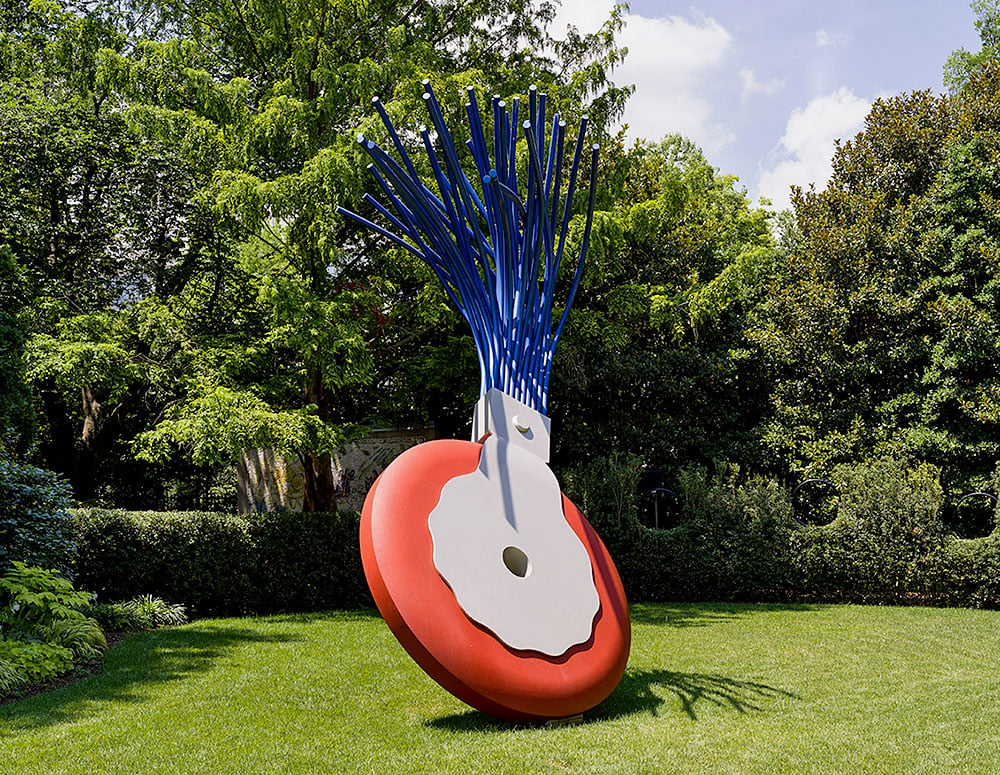
Claes Oldenburg and Coosje van Bruggen, Typewriter Eraser, Scale X (1998–1999). Courtesy of the National Gallery of Art.
Now that you’ve gotten your fill of this garden of earthly delights, it’s time to refuel. We suggest a dip into Dirty Habit, a deceptively named upscale restaurant about one block north of the National Gallery, serving delectable drinks that will revive even the weariest traveler.
From there, you’re just steps from Riggs, a 19th-century bank building recast as an ultra-luxe hotel where nearly two dozen American presidents came for their banking needs, stepping into the very same sweeping lobby. The rooms are fashioned after a safety deposit box; the Louisa Adams suite, named after the First Lady, even has its own baby grand piano. Upstairs, Café Riggs is beloved by locals, while the subterranean speakeasy Silver Lyan, housed in the bank’s original vault, has become a local hangout. Alternatively, the Conrad, designed by the Pritzker-winning firm of Herzog & de Meuron, offers a slick take on five-star hospitality with its clean lines and Calacatta marble walls. Estuary, the hotel’s eatery, emphasizes fare sourced from nearby Chesapeake Bay, such as mouthwatering Maryland crab rolls.
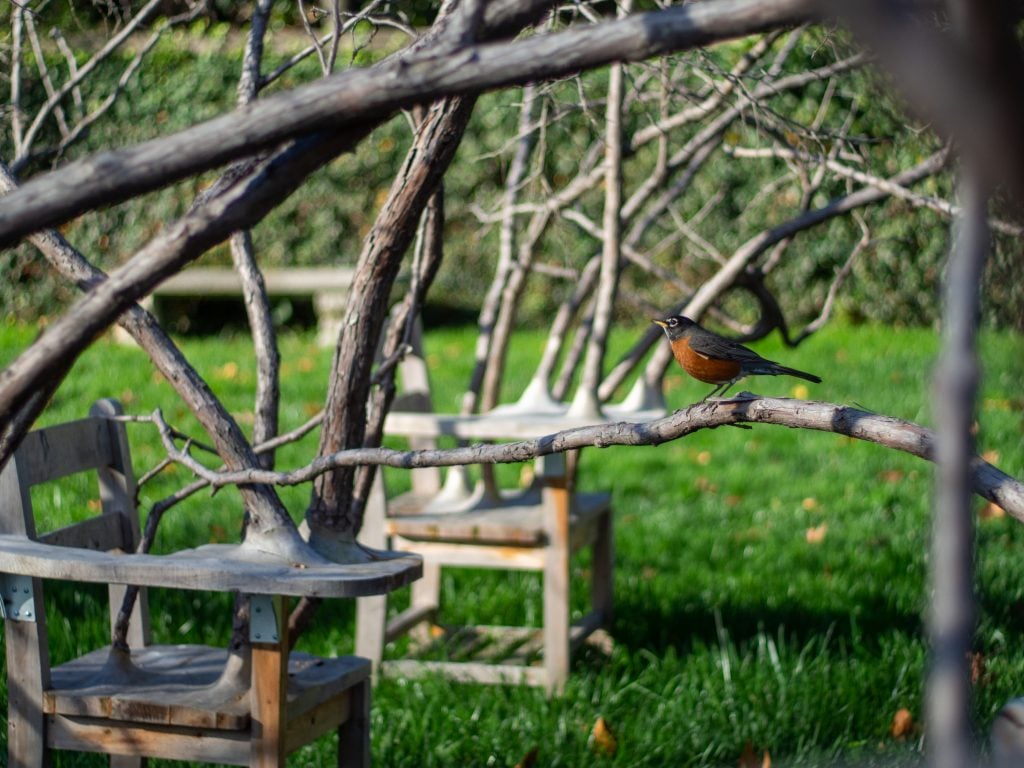
Installation view of “Hugh Hayden: Brier Patch” at Dumbarton Oaks. Photo: Kevin McDonald. Courtesy of Dumbarton Oaks.
Start your new day in the historic enclave of Georgetown, in the northwest corner of the city, with a cup of joe and a bagel from local favorite Call Your Mother Deli (eat here and, yes, call her!). You can’t miss the bubblegum-pink building with a line snaking out the front door and down the cobblestones.
Then head north toward Dumbarton Oaks (1703 32nd Street), the Harvard University research center, museum, and garden. Against the backdrop of a Philip Johnson-designed pavilion and classic Federal-style house museum, the landscape—designed by Beatrix Farrand—is a prime example of the Country Place Era style, boasting an orangery, rose garden, and ellipse. It’s here that the museum inaugurated a series of contemporary art interventions in 2009, and where Texas-born, New York-based artist Hugh Hayden’s dreamlike installation has taken root.
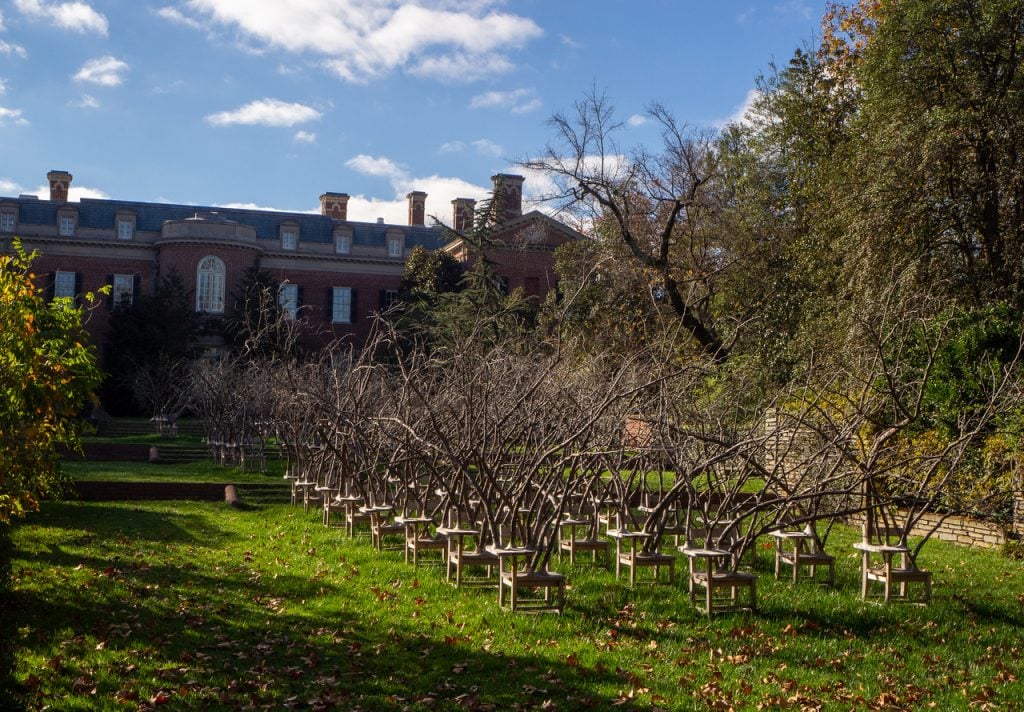
Installation view of “Hugh Hayden: Brier Patch” at Dumbarton Oaks. Photo: Kevin McDonald. Courtesy of Dumbarton Oaks.
New Yorkers may recall Hayden’s brilliant Brier Patch from its original setting at Madison Square Park—now it has a new life in Washington, D.C. A total of 100 wooden elementary school-style desks are situated in clusters, from which white cedar tree branches sprout. Why does one seed prosper and grow when others lay dormant? What is the right environment to help a student thrive? These are some of the big questions that Hayden’s artwork asks.
When in a college town, do as the students do and stop into Martin’s Tavern, a no-nonsense Georgetown haunt famous for its presidential sightings. Before his turn at the White House, John F. Kennedy is said to have proposed to Jackie here, and Harry and Bess Truman were regulars with their daughter Margaret while she was a student at nearby George Washington University.
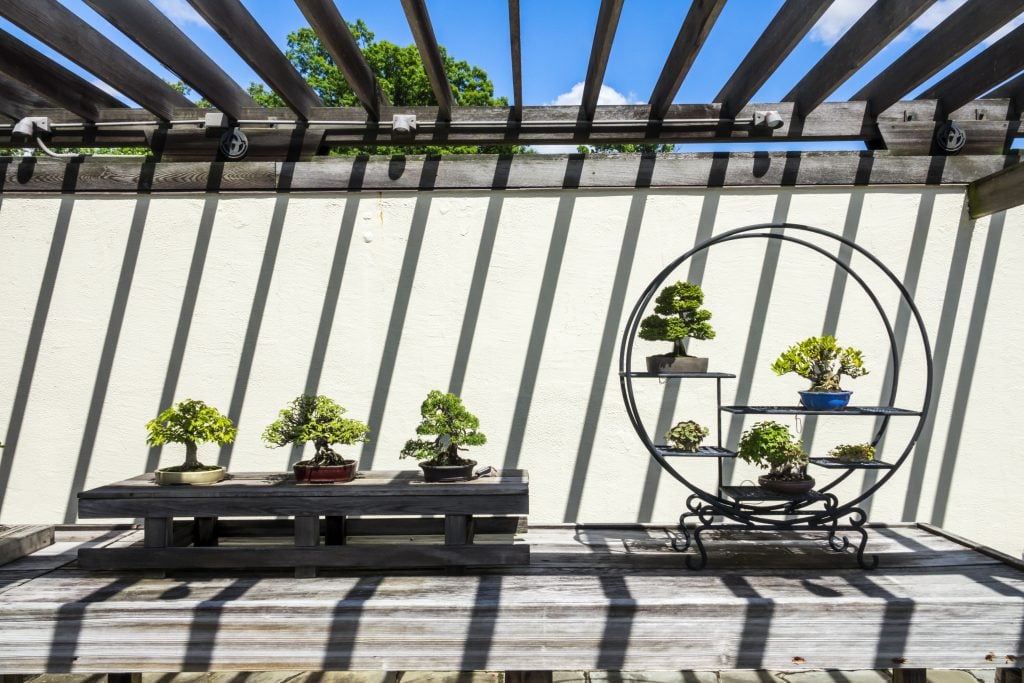
Washington D.C., U.S. National Arboretum, Bonsai and Penjing Museum tree display. Photo: Jeffrey Greenberg/Universal Images Group via Getty Images.
The District of Columbia is, of course, known for its many historic monuments and memorials, not to mention the Capitol building, Washington Monument, and Tidal Basin, but one of the lesser-known gems is this outdoor museum. The Arboretum (3501 New York Avenue) is a stunning expanse of 446 acres that houses a wealth of displays including the National Bonsai & Penjing Museum, the Gotelli Conifer Collection, and the Flowering Tree Walk, where you can take in the glorious colors of the azalea blooms.

The National Capitol Columns at the United States National Arboretum in Washington, D.C. (Photo by Daniel SLIM / AFP) (Photo by DANIEL SLIM/AFP via Getty Images)
The crown jewel of the museum, however, is the permanent installation of the National Capitol Columns. The 22 ornately constructed Corinthian columns are arranged in a circular formation that brings Stonehenge to mind. The stately sandstone columns, quarried from Virginia, were originally designed to support the East Portico of the Capitol and served as the impressive backdrop for the inaugurations of Presidents Andrew Jackson and Abraham Lincoln, but were removed in 1958 and later relocated to these 20 idyllic acres of parkland.
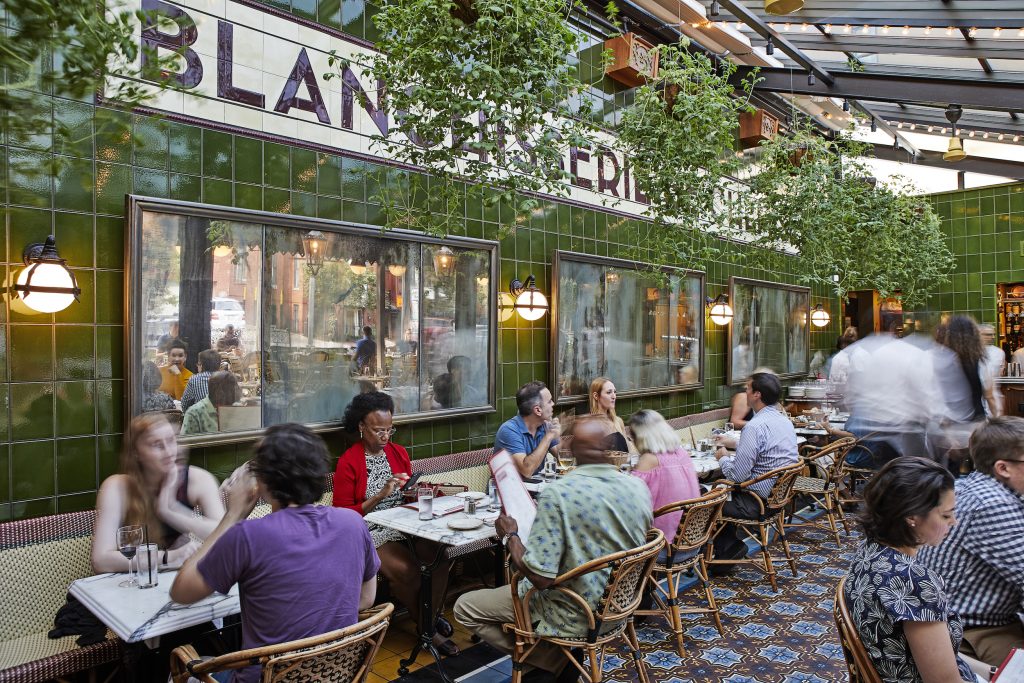
Inside the Paris-inspired restaurant Le Diplomate in Washington, D.C. Photo: Tom McCorkle for the Washington Post via Getty Images.
Now on to Le Diplomate. You might do a double take when you enter the lively French-style brasserie, with its evocations of Parisian cafe culture and a clientele that reads like a who’s who of Beltway pundits. The tricolore of the French flag features prominently, as does vintage Tour de France memorabilia lining the walls. There’s not a bad seat in the house—if we’re being diplomatic.

Approach to the Pavilions at Glenstone. Photo: Iwan Baan. Courtesy of Glenstone Museum.
One of the newer additions to the Washington D.C. art landscape is the truly spectacular Glenstone Museum in Potomac, Maryland (12100 Glen Road), where the minimalist estate founded by collectors Mitch and Emily Rales to house their contemporary art collection meshes beautifully with the surroundings. It might be just 15 miles outside the nation’s capital, but Glenstone feels as if it’s from another planet—a lush, art-filled planet boasting more exhibition space than either the Whitney in New York or the Broad in Los Angeles.
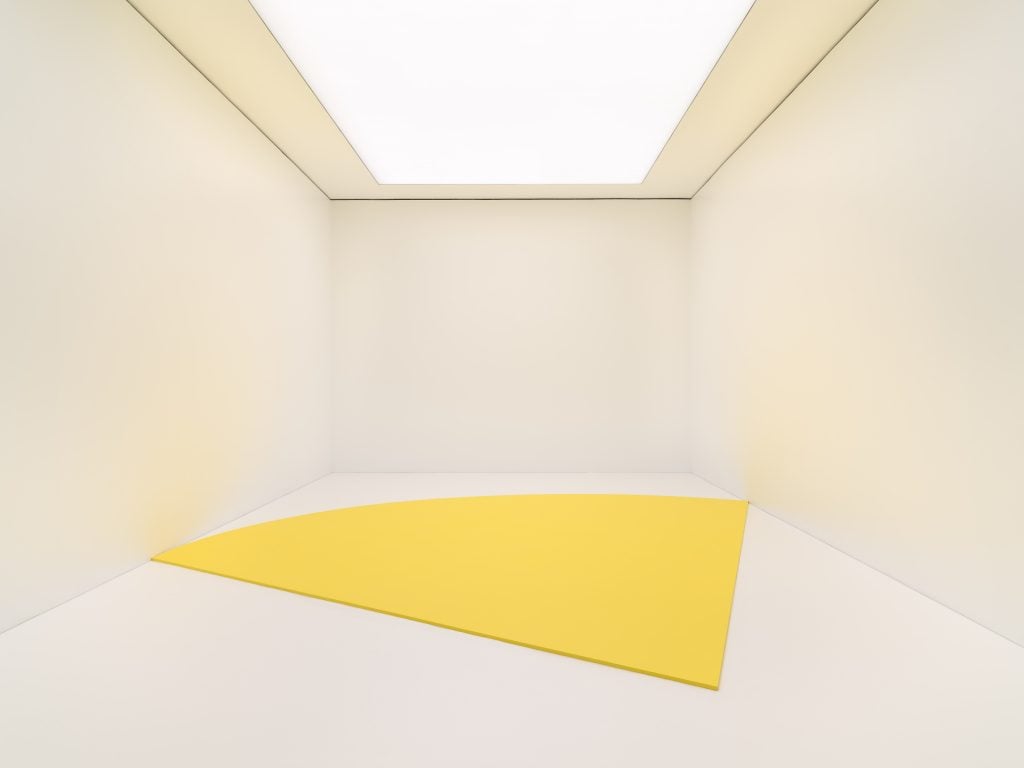
Installation view of Ellsworth Kelly’s Yellow Curve (1990) at Glenstone. © Ellsworth Kelly Foundation. Photo: Ron Amstutz. Courtesy of Glenstone Museum, Potomac, Maryland.
Though it opened in 2006, it was an expansion in 2018 that catapulted the museum to the level of world-class art institution. Currently on view is “Ellsworth Kelly at 100,” an extensive centennial survey of the late American artist featuring works from his 70-year career. Kelly’s oeuvre runs the gamut from cerebral meditations on form to colorful geometric paintings—like those from the canonical “Spectrum” series. But it’s his landmark large-scale floor painting Yellow Curve that takes pride of place inside the museum, taking up more than 600 square feet of floor space in its first exhibition since it was conceived in 1990.
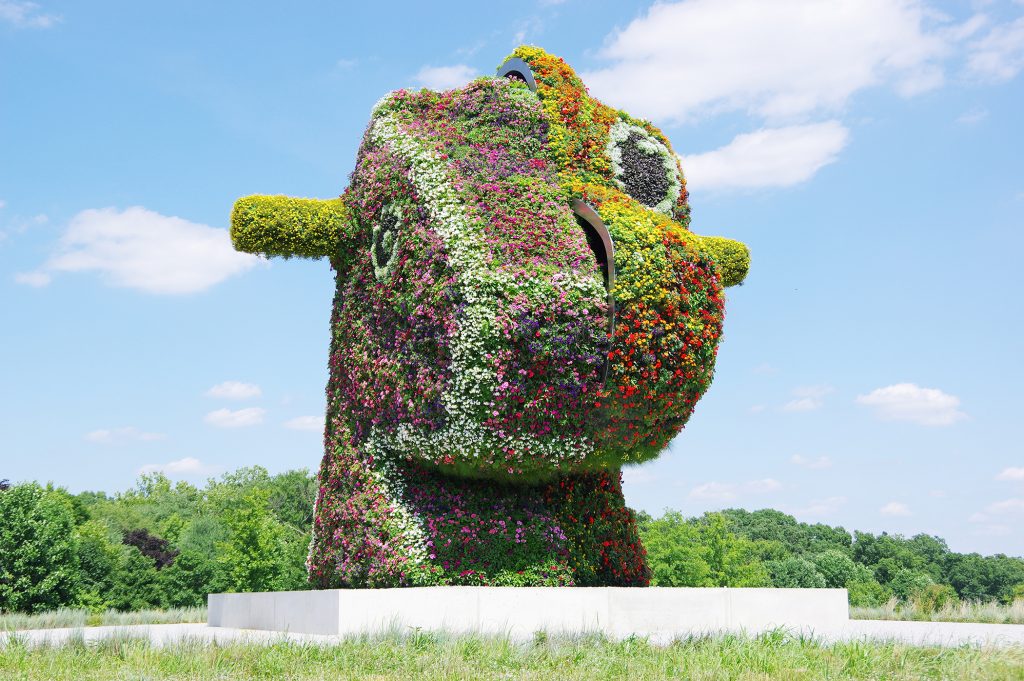
Jeff Koons, Split-Rocker (2000). © Jeff Koons. Courtesy of Glenstone Museum.
Don’t leave Glenstone’s grounds without observing the visual delights of Jeff Koons’s crowd-pleasing Split-Rocker topiary sculpture. Half dinosaur and half rocking horse, the florally festooned work boasts its own computer-controlled irrigation system, designed to monitor which zones require more or less water at any given time and for each individual species. Marigolds, zinnias, and petunias, oh my!
Visit Artnet’s Summer Itineraries in New York, Los Angeles, and Chicago.